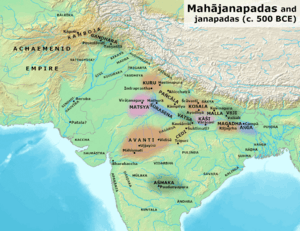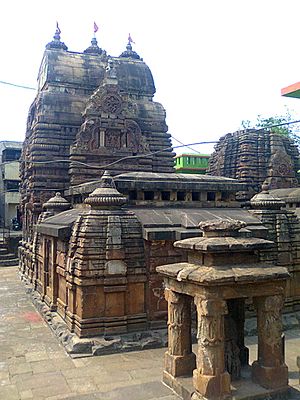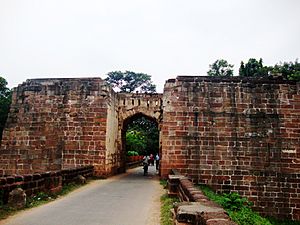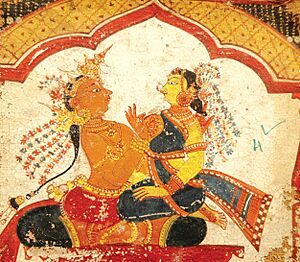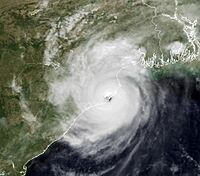History of Odisha facts for kids
The history of Odisha started a very, very long time ago, even before humans wrote things down. Tools from the Stone Age have been found all over the region. We also learn about early Odisha from old stories and books like the Mahabharata and some Puranas. People from Odisha also traded by sea with other kingdoms in the East Indies.
In 1568 CE, a big change happened. Armies from the Sultanate of Bengal, led by a general named Kalapahad, took over the region. Odisha lost its independence. The rulers who came after were often controlled by others, not truly kings. By 1593, Odisha became part of the Mughal Empire. Later, in 1751, the Marathas took control. During their time, writing and poetry became very popular. In 1803, the British Empire took over. They split Odisha into parts of other provinces. Finally, in 1936, the province of Odisha was created for people who spoke the Odia language.
Old Names for Odisha
The land we call Odisha today had many different names in the past. Here are some of them:
- Kalinga: This name is found in old texts like the Mahabharata. It's said that a prince named Kalinga started a kingdom in this area. Famous writers like Ptolemy also mentioned Kalinga.
- Utkala: Sometimes, Utkala was seen as part of Kalinga. Other times, it was a separate kingdom. The name might mean the "northern part of Kalinga" or "land of finest art."
- Mahakantara: This name means "great forest." It was used in some old writings from the Guptas' time. It probably referred to the Kalahandi and Jeypore areas today.
- Udra and Odra: These names might have first referred to a group of people or a tribe. Later, they meant the kingdom where these people lived, especially near the coast.
- Oddiyana: Some Buddhist texts mention Oddiyana. Some experts think this name might have referred to Odisha.
- Kamala Mandala: This means "lotus region." An old writing from the 1200s found in Narla used this name for the region.
- South Kosala: This name refers to parts of modern-day Chhattisgarh and western Odisha. It's different from Kosala in Uttar Pradesh.
- Kongoda: An old copper plate found in Ganjam district calls the region Kongoda.
- Trikalinga: This name means "three Kalingas." It might have referred to Kalinga, South Kosala, and Kongoda together.
- Chedi: This was the kingdom of King Kharavela, named after his family, the Chedi dynasty.
- Tosali: This was a city and the area around it. It was possibly a part of Kalinga during King Ashoka's time. Its capital might have been near modern Dhauli.
- Uranshin: Some Arab mapmakers in the 900s used this name.
- Jajnagar: This name was used for Odisha in texts from the 1200s and 1300s.
- Odivissa: This name is found in some Buddhist writings.
Ancient Times
Prehistory
Millions of years ago, the land that is now Odisha was part of a huge continent called Gondwana. Because of this, some of the oldest rocks in India, from billions of years ago, are found here. Also, the coal fields in the Mahanadi and Ib river areas are rich in fossils. Scientists have found new types of ancient plants there.
In areas like Mayurbhanj and Keonjhar, tools from the early Stone Age have been found. Rock carvings and paintings from the late Stone Age are in the Gudahandi hills. In Kuchai, near Baripada, many tools like hoes and grinding stones, plus pottery pieces, have been discovered. Prehistoric paintings are also found in places like Garjan Dongar and Ushakothi. Some experts wonder if the writings at Ushakothi are an early form of the Brahmi script.
Old Writings and Kingdoms
According to some old texts, the Kalinga region first included the areas of Puri and Ganjam.
Stories say that a king named Bali had no sons. He asked a wise man, Dirghatamas, for help. The wise man blessed him with five sons. These princes later started their own kingdoms. For example, Prince Kalinga founded the kingdom of Kalinga in what is now coastal Odisha.
The Mahabharata also mentions Kalinga many times. King Srutayudha of Kalinga fought in the Kurukshetra War. He had a special mace that protected him. But he was warned not to use it on someone not fighting. He accidentally used it on Krishna, who was unarmed, and the mace killed him instead.
An old Buddhist text, Mahagovinda Suttanta, mentions Kalinga and its ruler, Sattabhu.
Before the Mauryan Empire
Around 350 BCE, Mahapadma Nanda, the ruler of Magadha, is believed to have conquered Kalinga. Old writings mention that the Nanda kings also built irrigation systems in Kalinga.
Old beads and coins from an unknown king have been found in Asurgarh, dating back to before the Mauryan Empire.
Mauryan Rule
Ashoka of the Mauryan dynasty conquered Kalinga in the terrible Kalinga War in 261 BCE. This was in the 8th year of his rule. His own writings say that about a million people were killed, and 1.5 million were captured. The war caused so much suffering that it deeply affected Ashoka. He became a peaceful person and turned to Buddhism. However, some historians believe his interest in Buddhism started even before the war.
The Mauryans ruled Kalinga as a province. They used Tosali (modern-day Dhauli) as their main city and justice center. A prince, or viceroy, ruled from Tosali. Ashoka put up two special writings, called edicts, in Jaugada and Dhauli.
King Kharavela
In the 1st century BCE, a new family called the Mahameghavahana dynasty started ruling Kalinga. Kharavela was their third king. We know most about him from the Hathigumpha inscription in Udayagiri. This writing tells us about his life from childhood to his 13th year as king.
- Years 1–5: Kharavela became king at 24. In his first year, he fixed the walls of his capital, Kalinganagari, which a storm had damaged. In his second year, he attacked the kingdom of Satavahana king Satakarni I. In his third year, he held many dance and music shows for his people. In his fourth year, he again attacked the Satavahana kingdom and gained more power. In his fifth year, he fixed an old water channel that the Nandas had built 300 years before.
- Years 6–10: In his sixth year, he lowered taxes and helped people in both cities and villages. In his eighth year, he led an army against Rajagaha. The Yavana (Greeks) were moving towards Pataliputra. When they heard about Kharavela's victory, their king, Dimita, had to go back to Mathura. Kharavela chased them out of Mathura, which was an important religious place. To celebrate, he built a victory palace in Kalinga. In his tenth year, he attacked northern India again.
- Years 11–13: In his eleventh year, Kharavela defeated the Dramira country. In his twelfth year, he attacked northern India for the third time and went very far north. On his way back, he scared Magadha. The king of Magadha gave up, and Kharavela brought back a special statue called Kalinga Jina. This statue of Rishabhanatha had been taken from Kalinga 300 years earlier. Bringing it back was a huge achievement. In his thirteenth year, Kharavela built many caves in the Kumari hills for Jain monks and gave them gifts. Jainism grew strong in Kalinga because Kharavela supported it. He also helped other religions and was known for fixing temples.
The record stops after his 13th year. His son, Kudepasiri, probably became king after him.
Later Ancient Dynasties
| Odisha Timeline | |
|---|---|
| 500 BCE – 1300 CE | |
| c. 350 BCE | Mahapadma Nanda takes over Kalinga |
| 261 BCE | Ashoka wins the Kalinga War |
| c. 170 BCE | Kharavela becomes king |
| c. 639 CE | Hiuen-Tsang visits Oddiyana |
| c. 885 CE | Janmejaya I starts the Somavamsi dynasty |
| c. 1135 CE | Anantavarman Chodaganga moves his capital to Kataka |
| c. 1245 CE | Narasimhadeva I builds the Konark temple |
| c. 1278 CE | Queen Chadrika builds the Ananta Vasudeva Temple |
Gautamiputra Satakarni is known to have attacked Kalinga during his rule. His mother's writings say that all kings obeyed him, and he was the lord of Mount Mahendra.
Coins found in places like Jaugada suggest that the Kushan Empire might have reached Kalinga. Many of these coins were copies, meaning local rulers might have used them after the Kushanas.
In the 3rd century, a group called the Murundas ruled from Pataliputra. They might have come from Central Asia and used coins similar to Kushana coins.
After the Guptas, a new family called the Matharas rose in southern Kalinga. They ruled from Pishtapura and their kingdom stretched from the Mahanadi to the Godavari rivers.
Another family, the Sharabhapuriya dynasty, ruled western Odisha after the Guptas. We know about them from their copper plates and coins. They might have been local chiefs under the Guptas. They ruled parts of modern-day Raipur and Kalahandi from about 499 to 700 CE.
Shailodbhava Dynasty
The Shailodbhava dynasty ruled parts of Odisha from the 500s to the 700s. Their main area was called Kongoda-mandala, which included parts of Ganjam, Khordha, and Puri districts. Their capital was Kongoda, now known as Banapur. The king of Gauda, Shashanka, conquered Odisha and made Madhavaraja II of the Shailodbhava family his local ruler.
Madhavaraja II soon became independent. His writings say he was the "lord of the entire Kalinga." He performed special sacrifices to show his independence. His son, Dharmaraja, was a strong ruler for at least 30 years. Later, the Shailodbhavas became less important, and their land became part of the Bhauma-Kara kingdom.
Bhauma-Kara Dynasty
The Bhauma-Kara dynasty ruled parts of Odisha from the 700s to the 900s. Their kingdom was called Toshala. By the late 700s, they controlled the land that the Shailodbhavas used to rule. The early Bhauma-Kara kings followed Buddhism, while later ones followed Shaivism and Vaishnavism.
King Shivakara I (around 756-786) ruled most of coastal Odisha. He conquered Kongoda and northern Kalinga.
Tribhuvana Mahadevi I, a queen, helped unite the kingdom. Under her and later rulers, different regions like Odra, Toshala, Kongoda, and Utkala started to come together.
Somavamshi Dynasty
The Somavamshi dynasty, also called the Keshari dynasty, ruled parts of Odisha from the 800s to the 1100s. Their capitals were Yayatinagara and Abhinava-Yayatinagara. The early Somavamshi kings ruled in western Odisha. King Janamejaya I ruled for 34 years and expanded his power. By the end of his rule, his influence reached eastern Odisha.
Yayati I (around 922-955) gave many land grants. He moved the capital to Guheshvarapataka, which was renamed Abhinava-Yayatinagara. Yayati I is known for building a new temple in Puri and putting the image of Purushottama (Jagannatha) there. His rule marked the start of a new style of temple building in Odisha.
Eastern Ganga Dynasty
Indravarman I is thought to be the first known king of the Eastern Ganga dynasty. His capital was Dantapura. Many kings of this family used the title Trikalingadhipati, meaning "lord of the three Kalingas." The capital later moved to Kalinganagara.
Around 639 CE, a Chinese traveler named Xuanzang visited this region. He wrote that Mahayana Buddhism was very popular here. He mentioned a monastery called Puphagiri. New digs have found many Buddhist buildings from this time.
The capital was moved again to Kataka by Anantavarman Chodaganga in 1135. He is said to have started building the famous Puri Jagannath temple. His successor, Anangabhima Deva III, finished it. Narasingha Deva I is known for building the amazing Konark temple.
In the early 1100s, Kalinga was conquered by Kulothunga Chola I. An old poem called Kalingattuparani praises this invasion.
According to a text from the 1200s, the ruler of Jajnagar (Kalinga) bothered the Bengal ruler in 1243. The Bengal governor attacked Jajnagar in 1244. The Kalingan army fought back and defeated the Bengal army.
Medieval Odisha
Gajapati Empire
| Odisha Timeline | |
|---|---|
| 1200 CE - 1800 CE | |
| 1434 CE | Kapilendradeva becomes king |
| c. 1467 CE | Sarala Dasa writes the Odia Mahabharata |
| 1559 CE | Mukunda Deva takes the throne |
| 1568 CE | Kalapahad invades Orissa |
| 3 March 1575 | Battle of Tukaroi happens in Balasore |
| 1623 | Shah Jahan visits Orissa |
| 1751 | Alivardi Khan gives Orissa to Marathas |
The Gajapati Empire was started by Kapilendra Deva in 1435. He took over after the last Eastern Ganga king. Kapilendra Deva expanded his kingdom greatly, from the Ganga river in the north to Bidar in the south by 1457.
During Kapilendra Deva's rule, the famous Odia poet Sarala Das wrote the Odia Mahabharata and other important works.
When Kapilendra Deva died in 1467, his sons fought for the throne. Purushottama Deva finally became king in 1484. During this time, parts of the empire were lost to the Vijayanagara kingdom. But Purushottama Deva managed to get most of these lands back.
His son, Prataparudra Deva, became king in 1497. He faced attacks from Bengal and the Vijayanagara Empire.
A minister named Govinda Vidyadhara rebelled against King Prataparudra Deva. He killed the king's two sons and became king himself in 1541.
Bhoi Dynasty
The Bhoi dynasty was started by Govinda Vidyadhara in 1541. This dynasty did not last long. During their rule, the kingdom faced conflicts with neighbors and civil wars. Govinda was followed by his son, Chakrapratap, who was not liked by the people. After Chakrapratap died in 1557, a minister named Mukunda Deva rebelled. He killed the last two Bhoi kings and declared himself the Gajapati of Odisha.
Mukunda Deva
Mukunda Deva became king in 1559. Odisha was facing many problems inside the kingdom. Mukunda made an alliance with Akbar, which made him an enemy of Sulaiman Khan Karrani, the ruler of Bengal. Sulaiman sent his son and his famous general, Kalapahad, to conquer Odisha in 1567.
Mukunda fought the Bengal forces but had to leave to stop a rebellion in his own kingdom. He was killed in a battle with the rebels. Kalapahad then went through the kingdom, destroying many temples. By the end of 1568, Odisha was under the control of Sulaiman Khan Karrani.
The year 1568 is very important in Odisha's history. Mukunda Deva is seen as the last independent ruler of Odisha. After this, Odisha was never an independent kingdom again.
Karrani Rule
In 1568, Odisha came under the control of Sultan Sulaiman Khan Karrani of the Karrani dynasty, who ruled Bengal.
In the Battle of Tukaroi in Balasore, Daud Khan Karrani was defeated. He signed a treaty, giving up Bengal and Bihar, and keeping only Odisha. But the treaty failed, and Daud invaded Bengal again. He was defeated and killed in 1576.
Modern Era
Mughal Rule
In 1590, Qutlu Khan Lohani, an officer, declared himself independent. Man Singh I, the Mughal governor of Bihar, attacked him. Qutlu Khan died, and his son accepted Mughal rule. He was made Governor of Odisha but later attacked the Jagannath Temple. Man Singh defeated him in 1592. By 1593, Odisha was fully part of the Mughal Empire.
Under Akbar
Raja Ramachandra Deva, the king of Khurda, accepted Akbar's rule. Akbar mostly let local chiefs manage their own affairs.
Under Jahangir
After Akbar, his son Jahangir became emperor and changed policies. Odisha became a separate province, ruled by a governor called a Subahdar.
Quasim Khan became governor in 1606. During his time, the king of Khurda, Purusottam Deva, was attacked by Mughal armies and had to make peace. Later, Kalyan Mal also attacked Purusottam Deva.
In 1617, Mukarram Khan became governor and also tried to attack Purusottam Deva, who fled. Purusottam Deva died in 1622. Prince Shah Jahan visited Odisha in 1623.
Under Shah Jahan
In 1628, Shah Jahan became the Mughal emperor. Muhammad Baqar Khan was appointed governor of Odisha. He expanded Mughal influence. Odisha was the first new province added to Akbar's fifteen by Shah Jahan. Its capital was Cuttack. In 1647, Narasimha Deva was killed by a Mughal general.
Under Aurangzeb
In 1658, Shah Jahan became ill, leading to a fight for the throne. Aurangzeb won in 1659. During this time, many local chiefs in Odisha declared independence. Khan-i-Duran was appointed governor under Aurangzeb and crushed these rebellions.
Nawab of Bengal Rule
Under Murshid Quli Khan
When Aurangzeb died in 1707, Mughal control over Odisha weakened. Murshid Quli Khan became governor of Odisha in 1714 and later the Nawab of Bengal in 1717. He was mostly an independent ruler. He worked to increase income and created new land grants.
Under Shuja-ud-Din
In 1727, Taqi Khan, Murshid's son-in-law, became governor. He fought with Ramachandra Deva II, who was captured and forced to convert to Islam. Taqi Khan died in 1734.
His successor, Murshid Quli Khan II, allowed worship in Puri. He also installed a new king in Khurda. In 1739, Alivardi Khan defeated and killed Sarfaraz Khan, who was the Nawab of Bengal.
The Marathas started raiding Alivardi Khan's land in 1742. Alivardi Khan could not stop them, so he gave Odisha to Raghoji I Bhonsle in 1751.
During this time, the idols of Jagannath and other gods were moved many times to protect them from being destroyed.
Maratha Rule
By 1751, the Marathas controlled Odisha. The Subarnarekha river was the border between Bengal and Maratha-ruled Odisha.
The Marathas made Odisha more important as a pilgrimage site, especially for the Jagannath Temple. They encouraged its upkeep. They also collected a tax from pilgrims, but poor people didn't have to pay. The Marathas built roads and houses and even tried a postal service. However, trade with other countries went down.
Literature and poetry became very popular in Odisha under the Marathas. This was because local chiefs and Maratha rulers supported writers.
The British understood that Odisha was important for trade, as it was between their lands in Bengal and Madras. In 1803, the British conquered the region during the Second Anglo-Maratha War.
European Trade and British Administration
| Odisha Timeline | |
|---|---|
| 1800 CE - 1947 CE | |
| 14 October 1803 | Fort of Barabati falls to the British |
| 1817 | The Paika Rebellion |
| 1866 | The Great Famine of 1866 |
| 1 April 1936 | Orissa became a separate province |
| 15 August 1947 | India becomes independent |
Early European Trade
The Portuguese were the first Europeans to build trading posts in Odisha. They had a settlement in Pipili. The British set up a trading post in Hariharpur in 1633 to trade cotton goods. But they couldn't keep it for long due to the climate and pirates.
In 1765, Lord Clive gained control of Bengal, Bihar, and parts of Odisha from the Mughal emperor. But this "Odisha" only meant the Midnapore district. The rest was controlled by the Marathas. British leaders tried to get Odisha from the Marathas.
Princely States and British Rule
In 1803, a British army led by Colonel Harcourt sailed from the south. They took control of Puri on September 18. Another force landed at Balasore and helped capture the Barabati fort in Cuttack on October 14.
On December 17, 1803, the Maratha ruler of Nagpur signed a treaty with the British East India Company. He gave up the province of Cuttack, which included coastal areas and princely states. The British then ruled this region as a division of the Bengal Presidency.
Jayi Rajaguru, a royal teacher, led a revolt against the British in 1804. This was the first uprising against British rule in Odisha. But the British stopped the rebellion, and Jayi Rajaguru was executed in 1806.
In 1817, the British had to stop the Paika rebellion. The Paika were local soldiers who didn't pay taxes for their service. They were unhappy with new British land laws and were led by Bakshi Jagabandhu.
Surendra Sai started a rebellion against the British in the Sambalpur region in 1827. During the Indian Rebellion of 1857, the princes of Odisha did not join the fight.
In 1866, Odisha suffered a terrible famine called Na Anka Durvikhya. About a million people died. During the famine, Babu Bichitrananda Das and Gouri Shankar Roy started a magazine in Odia called Utakala Deepika. It was the first independent publication in Odia.
In 1870, Madhusudan Das became the first person from Odisha to get a university degree. He later became a lawyer and a very important leader in the state.
In 1882, the Utkal Sabha was formed, marking the start of political activities in Odisha. In 1888, they asked the British to bring all Odia-speaking areas under one administration.
In 1903, the Utkal Union Conference was founded. In 1912, Odisha and Bihar were separated from Bengal to form a new province. In 1913, the Orissa Tenancy Act was passed, giving better rights to farmers. Also in 1913, the first Odia daily newspaper, Asha, began publishing. Gopabandhu Das was its editor. He also started a magazine called Satyabadi to promote Odia literature. In 1919, he started his own weekly newspaper, Samaja.
In 1920, the Indian National Congress decided to organize provinces based on language. This inspired leaders in Odisha to demand a separate province for Odia-speaking people. In 1930, volunteers marched from Cuttack to Inchudi and made salt, defying the British salt tax law.
On April 1, 1936, Odisha became a separate province. Odisha Day is celebrated every year on this date. In 1936, Odisha had 6 districts. In 1938, Baji Rout, a 12-year-old ferry boy, was shot dead by police for refusing to ferry them. In 1943, the Utkal University was founded.
In 1946, the foundation stone for the Hirakud Dam was laid. Also, the Central Rice Research Institute was set up in Cuttack. In 1947, Biju Patnaik helped rescue the Indonesian Prime Minister and Vice President, flying them to India.
As a Part of Independent India
| Odisha Timeline | |
|---|---|
| 1947 CE – Present | |
| 1948 | Capital of Odisha moves from Cuttack to Bhubaneswar |
| 1952 | The first Kalinga Prize is given |
| 1953 | The Hirakud Dam is finished |
| 1956 | University College of Engineering is started in Burla |
| 1957 | Odisha Sahitya Academy is established |
| 12 February 1961 | The Legislative Assembly of Odisha building is opened |
On May 27, 1947, Harekrushna Mahatab became the Chief Minister. In 1946, it was decided that Bhubaneswar would become the new capital instead of Cuttack. A German architect designed the new capital. Also in 1948, construction on the Hirakud Dam began. By 1949, 24 princely states had joined Odisha, making it 13 districts.
In 1951, Biju Pattnaik donated money to UNESCO to create the Kalinga Prize. This prize is given every year to people who help make science popular. In 1953, the huge Hirakud Dam was completed. Also in 1953, the Rourkela Steel Plant was planned. In 1956, the first engineering college in the region was started in Burla. In 1957, the Odisha Sahitya Academy was created to promote the Odia language and literature.
On February 12, 1961, the new building for the Legislative Assembly of Odisha was opened. In 1961, Biju Pattnaik became the Chief Minister. In 1962, the foundation stone for the Paradip Port was laid. It became India's 8th major port in 1966.
In 1964, a Hindustan Aeronautics Limited plant was set up in Sunabeda to make jet engines. In 1966, Mahatab left the Indian National Congress to form a new party.
In 1972, Nandini Satpathy became the Chief Minister of Odisha. She resigned in 1973 and again in 1976. In 1980, Janaki Ballabh Patnaik became Chief Minister.
In 1981, NALCO was founded in Bhubaneswar. On October 30, 1984, Indira Gandhi was giving a speech in Bhubaneswar just before she was assassinated. In 1985, Janaki Ballabh Patnaik was re-elected. Sachidananda Routray, an Odia poet, received a major literary award. In 1989, the Agni-I missile was tested.
In 1990, Biju Patnaik became Chief Minister again. In the 1990s, many new districts were created in Odisha, bringing the total to 30. In 1993, Ranganath Misra became the first head of the National Human Rights Commission of India. In 1995, Janaki Ballabh Patnaik became Chief Minister again. In 1999, an Australian missionary and his two sons were murdered. Later that year, a terrible cyclone hit Odisha, causing huge damage and about 10,000 deaths. In March 2000, Naveen Patnaik became the Chief Minister.
On February 20, 2014, the Odia language was given the special status of a classical language of India.
See also
- Historic sites in Odisha
- Maritime history of Odisha
- List of rulers of Odisha
|


